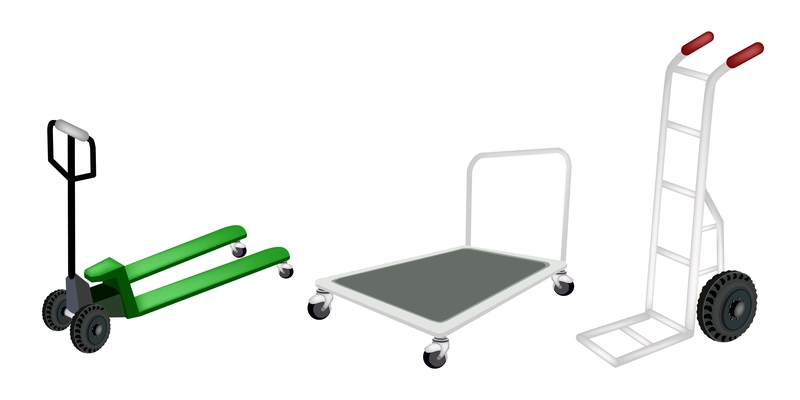Expert-Endorsed Strategies for Safe and Effective Sofa Storage
Storing your sofa requires more than just moving it out of the living room and into a garage or storage unit. From avoiding fabric deterioration to maintaining frame integrity, there's a science behind keeping couches and armchairs in pristine condition during periods of non-use. In this comprehensive guide, we'll uncover expert-recommended strategies for safe and effective sofa storage, providing you with the knowledge you need to protect your investment.
Why Secure and Sensible Sofa Storage Matters
A sofa is a centerpiece of any living space, often serving as both a comfort haven and a significant financial investment. Whether you're relocating, renovating, decluttering, or simply need extra space, how you store your couch can dramatically impact its longevity. Poor storage choices can lead to:
- Faded or stained fabric
- Mildew or mold growth
- Warped frames
- Unpleasant odors
- Pest infestations

Preparing Your Sofa for Storage: Essential Steps
Before you even think about moving your couch into a storage area, experts advise following a series of critical steps to minimize potential risks. Storing a sofa safely starts with meticulous preparation:
1. Deep Clean the Upholstery
Dirt, dust, and lingering crumbs can attract pests or cause permanent stains during long-term storage. Use a vacuum with an upholstery attachment to clean all surfaces, remove cushions, and meticulously clean underneath. For fabric sofas, use a fabric-safe cleaner. For leather, wipe with a specialized leather cleaner and conditioner.
2. Disassemble If Possible
Taking apart your couch eases the storage process and helps prevent frame stress. Detach removable legs, arms, and cushions. Keep hardware (screws, bolts, washers) in clearly labeled bags taped to the main frame or stored with your other essential parts.
3. Protect With the Right Materials
- Wrap cushions and pillows in breathable cotton sheets to allow air circulation and prevent trapping moisture.
- Cover the sofa frame with furniture blankets or soft moving pads to protect against scuffs and scratches.
- Avoid sealing with plastic, as it can trap moisture and encourage mold growth on both fabric and leather.
*Tip: For expensive or antique sofas, consult a professional upholstery conservator for expert storage recommendations.*
Choosing the Best Storage Environment for Your Couch
The storage location plays a significant role in ensuring you experience safe and effective couch storage. Experts unanimously recommend climate-controlled storage units as the gold standard, especially for extended periods. Here's what to consider:
Climate-Controlled: The Optimal Choice
The consistent temperature and humidity in a climate-controlled unit can greatly reduce the risk of mold, mildew, and warping. Controlling the environment is especially important for leather sofas, wood-framed couches, or upholstered furniture.
Check Security and Cleanliness Standards
- Choose storage providers that prioritize cleanliness, pest control, and have robust security (CCTV, gated access, alarms).
- Ask about facility maintenance procedures to ensure your storage unit is unlikely to harbor pests or dirt.
Avoid These Common Storage Spaces
- Attics and basements often have fluctuating temperature and moisture, increasing mold risk.
- Garages are vulnerable to dust, pests, and environmental changes, making them less ideal for safe, long-term sofa storage.
The Best Practices for Moving and Positioning Your Sofa in Storage
How you physically move and place your sofa in storage can have a profound impact on its condition. Here's how to position your couch for optimal protection:
1. Never Store Your Couch Upright or on Its Side
- Sofas are designed to rest flat on their legs. Placing them upright, on their side, or stacking them can damage the frame, cause sagging, or distort padding.
2. Elevate and Space Your Sofa
- If possible, place wooden pallets or blocks beneath sofa feet to allow airflow and protect from potential water leaks or concrete moisture.
- Leave space between furniture and walls for ventilation and easier access.
3. Avoid Stacking Heavy Items on the Sofa
Placing boxes or bins on or against the couch can flatten cushions, deform armrests, and strain the frame. Keep both the top and sides clear.
4. Don't Forget About the Floor
- For added protection, consider placing a durable plastic sheet or moisture barrier below the entire sofa (especially in non-climate-controlled areas), topped with moving blankets for breathability.
Preserving Your Couch in Storage: Expert Maintenance Tips
Even after careful placement, sofas in storage require periodic attention. These expert-endorsed maintenance strategies will help you achieve safe and effective sofa storage for months or even years:
- Check on your sofa every few months--monitor for early signs of moisture, mildew, or pest issues.
- Air out the unit briefly if safe to do so, allowing fresh air to circulate around the furniture.
- Rotate cushions slightly to maintain their shape and prevent indentations.
- Reapply leather conditioner every 3-6 months for premium sofas, even in storage, to prevent dryness or cracking.
The Do's and Don'ts of Long-Term Couch Storage
Let's recap expert recommendations for safe, long-lasting sofa storage:
Do:
- Clean and dry your sofa thoroughly before storage
- Disassemble and wrap components with breathable materials
- Select climate-controlled storage units whenever possible
- Elevate the sofa, leaving space for ventilation
- Inspect periodically for issues
- Use plastic wrap directly on the sofa
- Stack heavy objects on top of or against your couch
- Store in damp, dusty, or pest-prone environments
- Leave the sofa touching bare concrete or outside walls
- Neglect maintenance during long-term storage
Frequently Asked Questions About Sofa Storage
How long can I safely store my sofa?
With proper preparation and a climate-controlled environment, most sofas can be stored safely for 6 months to several years. Regular checkups are key, especially for high-end furniture.
Is it okay to wrap my sofa in plastic for storage?
Experts warn against using plastic directly on sofas for extended storage. It traps moisture, promoting mold and mildew. Use breathable covers, moving blankets, or cotton sheets instead for safe couch storage.
Should I stand my sofa on end to save space?
Never store your sofa upright or on end! This can distort the frame and padding. Always place sofas flat on their intended legs, leaving space for airflow.
Can I store my couch in a non-climate-controlled garage?
While possible for very short periods, it's not recommended for anything over a few weeks, especially in humid or fluctuating climates. Moisture, pests, and temperature changes can quickly damage upholstery and structure.
Do I need to use pest repellents when storing a sofa?
If your storage area is not professionally pest-managed, consider using natural repellents such as cedar sachets or mint pouches under and around your couch. Avoid chemical pesticides that could stain or smell up your furniture.

Professional Sofa Storage Services: Are They Worth It?
If you're storing a luxury, antique, or family heirloom sofa, or simply want peace of mind, professional furniture storage services offer significant benefits:
- Specialized climate control tailored for upholstered and leather furniture
- Expert packing and transport
- Fully enclosed storage pods or crates for maximum protection
- Pest management and regular inspections included
Summary: Achieve Safe and Effective Sofa Storage With These Expert Strategies
Whether you're downsizing for a season or planning a long-term move, following expert-backed tips for sofa storage ensures your cherished couch stays clean, fresh, and undamaged. Remember:
- Preparation is key--clean, disassemble, and protect with the right materials.
- Choose the right environment--climate control and security keep your sofa safe from harm.
- Position and maintain wisely--lay sofas flat, leave space, and check in regularly.
For more expert sofa storage strategies and additional furniture care tips, explore our related guides and blogs.



